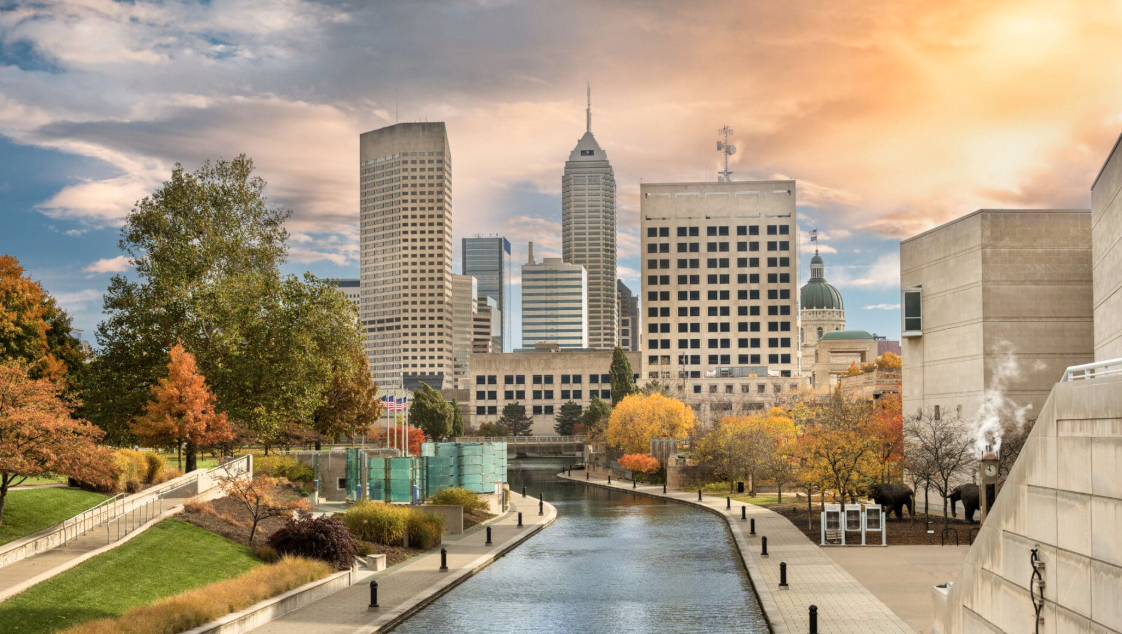Investing in Indianapolis: The Midwest’s Rising Capital for Growth and Opportunity

Economic Growth & Investment Climate
Regional GDP Outperformance
Indiana's real GDP is projected to grow around 2.9% in 2025, but the Indianapolis metro is outpacing at ~3.1% . This reflects a robust, broadly diversified expansion across sectors—ideal conditions for investors developing long‑term strategies.
Strategic Advantage
Indiana offers a flat corporate tax, no gross receipts or inventory taxes, and a menu of credits and incentives for job and capital investment. That supportive policy environment helps enhance project returns across real estate, startups, and growth equity.
Real Estate & Infrastructure
Housing Market Strength
Zillow designates Indianapolis as the second‑hottest metro in 2025—particularly notable in the Midwest—driven by strong employment and limited inventory. Median home values are ~$223K, below the national average, offering both affordability and upside potential.
Multifamily Resilience
Following a record 6,400-unit delivery in 2024, 2025 sees a supply drop to ~2,545 units (‑60%) . With continued population and job growth, occupancy and rental rate stability is expected—a strong case for multifamily investment.
Suburb Hotspots
Family‑oriented markets like Fishers and Carmel stand out for both demand and appreciation potential. And urban redevelopment—driven by projects like the new Eleven Park stadium complex—promise mixed‑use returns downtown.
Tech & Startup Ecosystem
Innovation Momentum
Indiana is emerging as a global innovation hub, powered by venture capital, infrastructure, and workforce talent. With eight Fortune 500s and increasing tech degrees, the ecosystem continues to mature.
Leading Startups
Local leaders like 120Water, 3Aware, hc1, PAXAFE and others have secured Series A+ rounds this year, spotlighting sectors from fintech to health‑tech. Statewide, companies like Scale Computing, Lessonly, and ClusterTruck are gaining traction.
Strong Support Infrastructure
Accelerators and incubators—from Techstars Sports to PAX Momentum (climate tech) and Export Indiana—support early‑stage growth. Corporates and EI-backed initiatives strengthen deal pipelines and ecosystem health.
Industry Diversification
Logistics & Transportation
With its central U.S. location and heavy infrastructure, Indianapolis is home to thousands of logistics firms, plus Amazon and FedEx hubs—critical strengths for industrial real estate investors.
Life Sciences & Healthcare
A massive life-sciences cluster (~$84 billion in output, 331,000 jobs) anchors investment. HQs like Eli Lilly and Elanco speak to deep biotech roots, making lab spaces and med-tech strong long-term plays.
Demographics & Workforce
Population & Talent
The metro area houses ~2.14 million people and is growing—fueling demand across housing, services, and talent. Workforce quality is enhanced by high levels of STEM and professional graduates.
Diversity in Entrepreneurship
Black-owned business applications and revenue in Marion County are rising—but still face capital access challenges. Programs like GANGGANG’s "In the Mix" are helping fill the gap. Parallel efforts like Startup Ladies support women founders.
Infrastructure & Quality of Life
Trails & Lifestyle Perks
Massive support for greenways—like the Cultural and Monon Trails—has boosted property values by up to 148% along corridors. Investments like parks and high-quality amenities drive long-term urban resilience.
Airport Strength
Indianapolis Airport served over 10 million passengers in 2024 and is ranked North America’s #1 cargo airport (9 years running)—a boon for both air and freight investors .
Key Investment Opportunities
| Sector | Opportunity |
|---|---|
| Single-family rentals | Affordable homes + tight inventory = strong cash flow & appreciation |
| Multifamily projects | Undersupply in rapidly growing neighborhoods |
| Industrial/logistics REIT | Leverage logistics hubs and central location |
| Med-tech/lab spaces | Tap into life sciences expansion & corporate partners |
| Startup venture capital | Invest in Series A+ and early-stage growth backed by accelerators |
| Neighborhood redevelopment | Mixed-use downtown developments (e.g., Eleven Park) |
Risks & Considerations
- Interest rates—multifamily financing costs may rise or delay deals.
- Inventory shifts—housing pipelines vary by sub-market.
- Startup volatility—tech firms remain high risk and stage-sensitive.
- Regulatory shifts—watch local planning and tax policy changes.
Investment Strategies
- Mixed-asset portfolios—combine real estate and VC to balance yield and growth.
- Local partnerships—tap networks like Elevate Ventures, High Alpha, and Indiana EDC.
- ESG & community focus—participate in DEI initiatives and benefit from subsidies.
- Sub-market focus—target Fishers, Carmel, Broad Ripple, Mass Ave or industrial belts.
Outlook & Conclusion
Indianapolis in 2025 offers a rare convergence: strong macroeconomic momentum, diversified industries, untapped startup potential, and high-quality living standards. With median home values ~37% below national averages—but rising—and an ecosystem fostering innovation, the region stands as a prime candidate for investors seeking both stability and upside.
Whether you're deploying capital in strategically located housing, industrial real estate, or backing the next fintech or cleantech breakout, Indy provides fertile ground and supportive partners. Coupled with strong infrastructure investment and inclusive growth initiatives, the city is positioning itself as a top-tier Midwestern investment narrative—and one well worth writing.